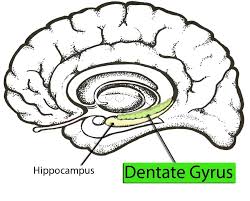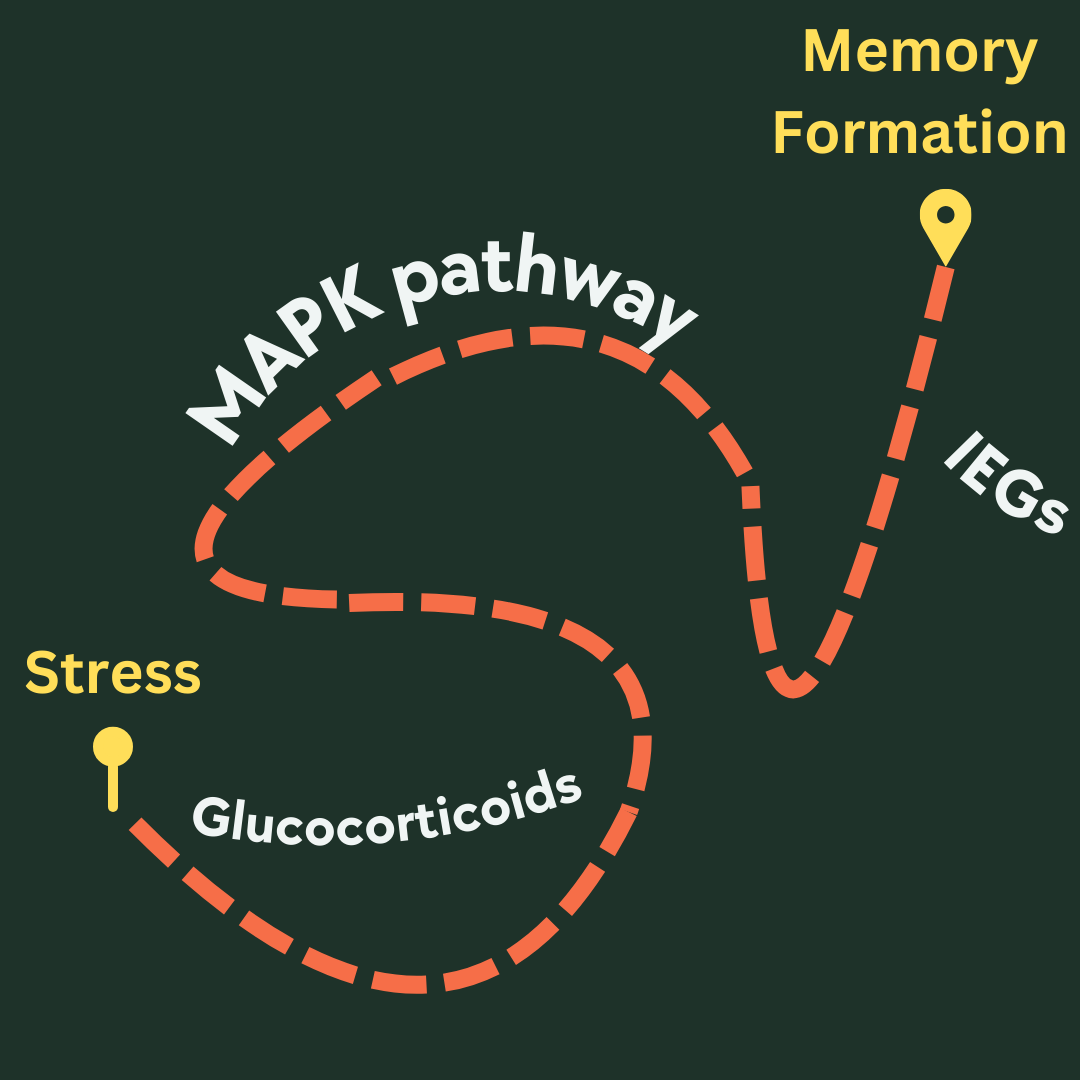Humans obviously experience stress, so obviously scientists have studied how being stressed impacts our brains. They have found that stress results in hormone release in the brain; these hormones are known as glucocorticoids with the most important one being cortisol.
In an article by Reul from 2014, they followed these hormonal signals and deduced how they are able to result in memories. Why is it important to connect stress to memories? Because, while many people can bounce back from stressful situations, many also suffer from those memories and end up with severe anxiety disorders like Post Traumatic Stress Disorder (PTSD). Therefore, if we know how the stress to memory formation path works, we can utilize that knowledge to develop effective treatments for PTSD and similar anxiety disorders.
Reul found that when glucocorticoids are expressed, 30-60 minutes shortly afterwards a set of immediate early genes (IEGs) are transcribed and expressed. IEGs can be thought of as the ‘First responders’ of all the genes. Many genes need proteins or other small molecules in order to go from DNA to a functional protein. IEGs code for (will end up making) these helper proteins. Most commonly, IEG proteins will be transcription factors which aid the transcription from DNA to RNA and eventually to a fully functioning protein.
Interestingly, these IEGs do not arise directly from the glucocorticoid hormones. Reul deduced this by looking at this time frame of 30-60 minutes; additionally, they tried to inhibit glucocorticoids receptors and the IEG activation inhibition was not reflected as it should have been if it were a direct glucocorticoid to IEG interaction. Well it turns out that an additional cell signaling pathway comes in between the hormone and the IEGs. That is the MAPK pathway. The MAPK pathway is a cellular signaling pathway that involves many proteins that will eventually end up affecting the proteins around DNA whether that be activating transcription factors, unwinding DNA for transcription, or activating RNA polymerase.
How do we connect this hormone to MAPK to IEGs pathway to memory formation? We can connect it because of where this takes place in the brain. Mainly, this pathway, especially the activation of IEGs, happens in the hippocampus region of the brain. The hippocampus is most well known as the memory center of the brain. Here is a short 2 minute video explaining the basics of the hippocampus structure and function. It was highlighted that a structure within the hippocampus, the dentate gyrus, is where the highest concentration of the IEG activation happens in memory formation. So as you experience a stressful event, the hormones are activating the MAPK pathway which then will activate the transcript of IEGs, and this is all happening in the dentate gyrus inside of the hippocampus.

This pathway is one piece in the larger puzzle of memory formation. Unfortunately, it is still unclear how exactly our brain forms and stores memories, but unlocking it piece by piece, like was done with this pathway, is how humans will eventually find all the puzzle pieces to put together into one big picture.
References:
Cortisol: What It Is, Function, Symptoms & Levels. (n.d.). Cleveland Clinic. Retrieved April 25, 2024, from https://my.clevelandclinic.org/health/articles/22187-cortisol
Glucocorticoids: Restoring balance during stress | Society for Endocrinology. (n.d.). Retrieved April 25, 2024, from https://www.endocrinology.org/endocrinologist/130-winter18/features/glucocorticoids-restoring-balance-during-stress/
Neuroscientifically Challenged (Director). (2015, June 1). 2-Minute Neuroscience: The Hippocampus. https://www.youtube.com/watch?v=5EyaGR8GGhs
Reul, J. M. H. M. (2014). Making Memories of Stressful Events: A Journey Along Epigenetic, Gene Transcription, and Signaling Pathways. Frontiers in Psychiatry, 5. https://doi.org/10.3389/fpsyt.2014.00005
Therapeutic potential of GABAB receptor ligands in drug addiction, anxiety, depression and other CNS disorders—ScienceDirect. (n.d.). Retrieved January 21, 2024, from https://www.sciencedirect.com/science/article/abs/pii/S0091305713001718?via%3Dihub
